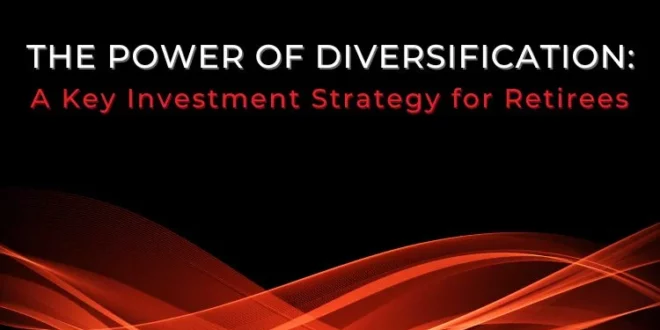A Key Investment Strategy for Retirees: Whether you’re just stepping into retirement or have been enjoying this golden phase for a while, there’s a word you’ve probably heard many times regarding investments – diversification. But what does diversification really mean, and why is it especially important for retirees? Let’s explore this concept with some easy-to-understand examples.
Understanding Diversification
In simple terms, diversification means not putting all your eggs in one basket. Imagine you’re going on a picnic. If you only bring sandwiches and, for some reason, they get ruined, you would have nothing left to eat. But if you brought sandwiches, fruits, and snacks, you’d still have something to eat even if the sandwiches were spoiled. This is the essence of diversification – spreading your resources to minimize risk.
In terms of investing, diversification means spreading your investments across different types of assets – like stocks, bonds, and real estate – rather than focusing on one type. This strategy helps you protect your wealth because different assets often perform differently at different times.
Why Diversification is Important for Retirees
As a retiree, you might ask, why is diversification particularly important for me? The answer lies in your income situation. When you’re working, you have a steady income stream, but in retirement, your income often comes from your investments and savings. Therefore, it’s crucial to protect your investment portfolio against major losses.
For instance, let’s say you had invested all your money in technology stocks because they had been performing well. However, if the tech sector suddenly crashes due to unforeseen circumstances (like it did during the dot-com bubble burst in 2000), your entire investment portfolio could suffer a severe blow. But if you had diversified your investments, only a portion of your portfolio would be affected, helping to safeguard your overall financial health.
How to Diversify Your Portfolio
Achieving a diversified portfolio involves a mix of different asset classes – stocks, bonds, real estate, and perhaps even some commodities or international investments.
For example, consider Ms. Jones, a retired school teacher. She has some of her savings invested in stocks of large, well-established companies (known as blue-chip stocks), some in government and corporate bonds, and a portion in a real estate investment trust (REIT). This mix allows her to potentially earn higher returns from her stocks, get a steady income from her bonds, and also enjoy some growth and income from her REIT. If one part of her portfolio underperforms, the other parts can help offset the losses.
Remember, though, that diversification is not just about having different types of investments, but also about diversifying within each type. For example, instead of buying stocks from only one sector, diversify across different sectors like technology, healthcare, finance, etc.
Conclusion
While diversification can’t eliminate all risk, it’s a powerful strategy to help protect your retirement savings. It’s like a safety net that can prevent your portfolio from suffering major losses when a specific investment or sector falls. It’s always wise to consult with a financial advisor to ensure your investments align with your retirement goals and risk tolerance.
Remember, retirement is not the end of your financial journey; it’s a phase where careful planning can bring you peace of mind, financial stability, and the freedom to enjoy your golden years to the fullest. Happy investing!
 Bond Trading
Bond Trading Finogent Solutions LLP Top Wealth Manager in India
Finogent Solutions LLP Top Wealth Manager in India






